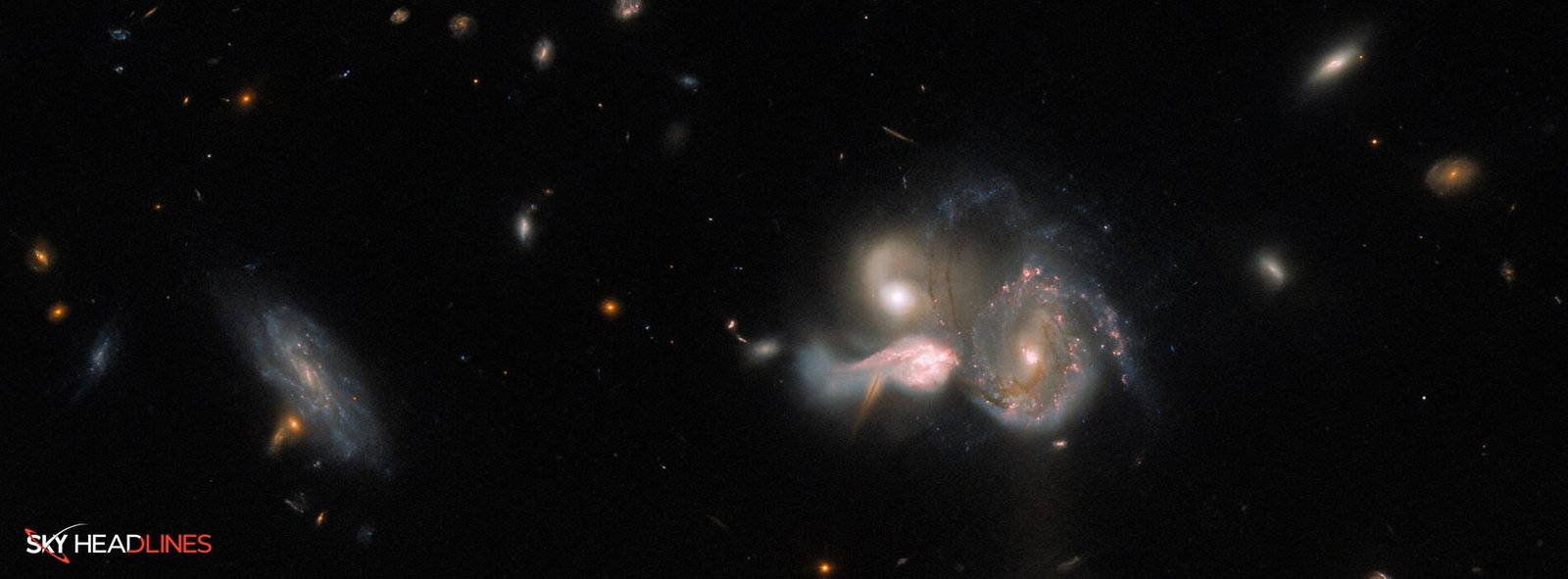Someday, the three galaxies in the constellation Boötes will combine into a single, enormous, brilliant galaxy. The Hubble Space Telescope has captured an incredible new image of galaxies collision course. It is rare for three colliding galaxies to collide simultaneously, but this event is particularly notable for a different reason. All three galaxies which collide are actively generating new stars at the time of the event.
The Galaxies collision in the Boötes constellation results in one massive galaxy. At the same time, the gravitational interactions between the three galaxies will destroy the spiral structure the galaxies currently display.
SDSSCGB 10189:
These three galaxies, known as SDSSCGB 10189, appear so close together in the photograph that they might be merging. colliding galaxies’ original shapes have been warped further by the gas and dust that connects them. There is a lot of light coming from the three galaxies.
On the scene’s left side, there is a spiral galaxy that is not involved in the collision. This galaxy appears to be calmly watching the events unfold, much like a human who is “rubbernecking” a car crash on Earth.
Only 50,000 light-years separate the three massive star-forming galaxies that makeup SDSSCGB 10189. At first glance, this distance may appear to be quite large and relatively safe from a collision, but in a cosmological context, it is actually quite close. For instance, the distance between the sun and Andromeda, the galaxy closest to the Milky Way, is more than 2.5 million light-years.
Brightest Cluster Galaxies (BCGs) are the largest and most massive colliding galaxies in the cosmos. The Hubble Space Telescope has captured a new image as part of an investigation into the birth of these galaxies
colliding galaxies Group (BCG):
In gas-rich galaxies collision and merge, a barycentric galactic Group (BCG) is created. Galactic clusters are massive structures made up of hundreds or thousands of galaxies. To understand the birth histories of these clusters, scientists can study the types of cluster galaxies that make them up. The complex structure of dark matter clumps and filaments connecting individual galaxies within a cluster is the “cosmic web.”. Scientists believe that BCGs, or Brightest Cluster Galaxies, may provide valuable insights into the history of the cosmic web.
The formation of BCGs and its implications for the evolution of the cosmos over the past 13.8 billion years remain contentious topics of discussion. Many astronomers believe these enormous, colliding galaxies arose when the universe was only approximately 19% of its present age. Nonetheless, there are many who believe BCGs are still developing and changing in the present day.
If SDSSCGB 10189 does indeed combine, the birth of a BCG would provide much-needed insight into the formation timing of these enormous, brilliant galaxies.





